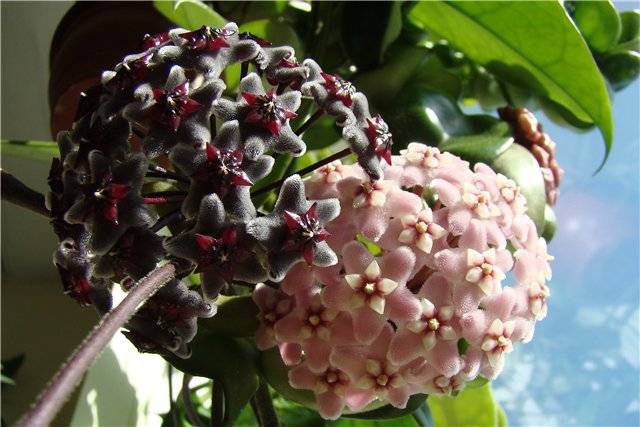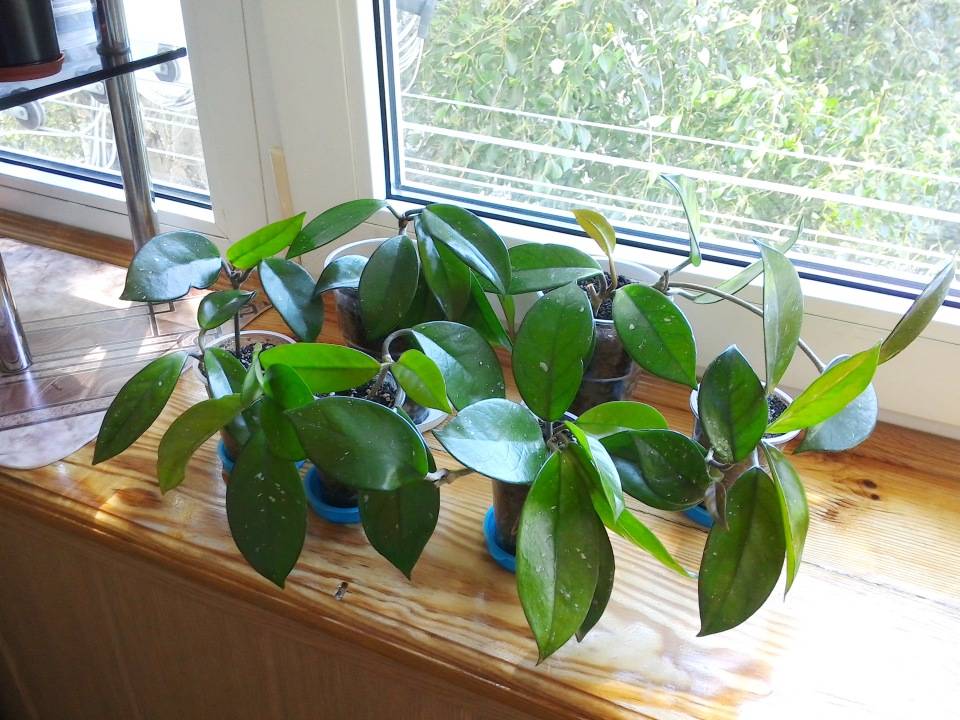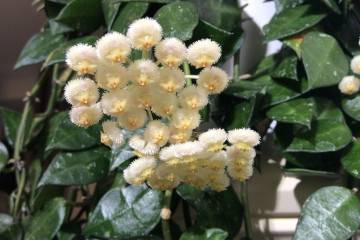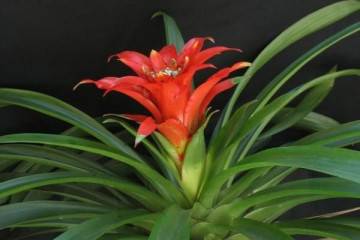Hoya Pubicalix - Silver Splash and Silver Pink
Content:
Hoya Pubicalix is a very unusual plant, whose gorgeous branches attract the attention of flower growers. The plant is suitable for growing as an indoor flower, but it has its own characteristics that you should be aware of.
Description and characteristics of the plant
The tropical liana Hoya Pubicalyx (Hoya Pubicalyx) belongs to the evergreen flowers of the large Lastovnev family. Natural varieties grow on the west coast of Australia, India, and southeast Asia. The plant was first discovered in early 1913 by researchers Ramos and Edano on the island of Luzon (Philippines). A few years later, the American botanist E. D. Merrill described hoya in his famous four-volume book on Philippine flowers.
Hoya is characterized by curly thick climbing stems, reaching a diameter of 0.5 cm.The leaves are dense leathery variegated 15 cm in length and 4 cm in width. The color of the leaves depends on the variety of the plant and many external factors (lighting, watering, soil composition), but they are mostly dark green with silvery-white spots of various shapes and sizes. Young leaves are most often purple or brown, growing to a typical color.
Umbellate inflorescences, located along the entire length of the stem. They consist of 35-45 flowers, the shape and color of which can also vary depending on the type of plant. Coloring can be a combination of several shades from cream and pale pink to dark red.
Care features
When grown at home, the optimum temperature is 23-25 ° C. Keeping in warmer rooms threatens the appearance of various diseases and infections. Hoya Pubicalix prefers bright, but diffused light. During the summer months, it is recommended to shade the plant with a fabric curtain to protect it from burns and changes in leaf pigmentation. In winter, on the contrary, it is advisable to create additional lighting.
Like any tropical plant, hoya needs high humidity. Therefore, in addition to regular watering, it is necessary to additionally spray the leaves from a spray bottle, especially in the summer heat. For autumn and winter, watering is reduced, spending it only after the soil dries out.
The substrate for Pubicalix needs a porous, drained soil with weak or neutral acidity. The soil mixture is made from light leafy and turfy soil, mixed with a small amount of coarse river sand, perlite or vermiculite. The addition of charcoal will provide additional nutrition, aiding in loosening and disinfection. As a top layer, small pebbles or coarse sand can be poured into the pot. This will avoid root decay.
The plant requires fertilizing with mineral preparations with the onset of spring heat every 2-3 weeks until autumn, but the flower may die from exceeding the dosage.
How it picks up buds and blooms
The flowering period is in the summer. The plant will be able to pick up the buds abundantly if you create conditions for it that are a little less than comfortable. In this case, the hoya can bloom even more than 2 times a year. Some varieties still bloom by cuttings, but in this case it is better to remove the buds so that early flowering does not interfere with the formation of the root system.
Numerous wax hoya flowers are covered with villi and collected in umbrellas, they can have different shapes depending on the type of plant. Most often, there are five-pointed layered stars, but you can also see flowers-balls.
Pruning
Hoya Pubicalyx is recommended to be wrapped around the support, and not to restrict growth. You can resort to the procedure when the lashes have become too long or when you need to prepare cuttings for propagation. However, you should not cut off the branches on which the inflorescences have formed, which will lead to the cessation of flowering. This does not apply to dried and damaged shoots and leaves, they should be removed in a timely manner.
Reproduction
Hoya can be propagated by cuttings, sprouting from seeds or dividing a leaf. The first option is more effective at home. It is enough to put cuttings 4-5 cm long with a leaf and nodules in a container of water, put them in a warm place, spraying every day. When the roots germinate, the young plants are replanted.
Growing Hoya Pubicalix from seeds is carried out mainly in greenhouses, since at home, as a rule, seed pods do not ripen. If this happens, then you can try to germinate them:
- Dry the seeds.
- Stir scraps of artificial fabrics into the soil mixture, and then place the seeds there.
- Carefully water the seedlings, treat with fungicidal preparations.
- Keep a container of seedlings that germinate within a week in a warm, well-lit area.
- After 2.5-3 months, when 3-4 leaves appear, plant the sprouts in separate containers.
Transfer
Hoya transplant is carried out annually. The overgrown roots of the plant speak of such a need. The procedure is carried out in the spring before flowering. The diameter of the new pot should be 2-3 cm larger than the previous one. Using too large a container will result in poor flowering.
The most suitable container for planting is a ceramic pot that allows air to flow to the roots. Hoya is transplanted by transshipment so as not to damage it. In this case, the roots at the surface of the coma are carefully examined, cutting off non-viable sharply sharpened sterile instruments. Places of cuts are sprinkled with charcoal powder.
Possible growing problems
More often than other pests, Hoyu Pubicalix is attacked by a scale insect. It should be removed manually, and the leaves should be treated with soapy water. If worms appear on the plant, then the leaves are wiped with alcohol.
Most of all, the plant is susceptible to diseases in the autumn. At this time, it is recommended to reduce watering, carefully replace the topsoil, treat the plant with fungicides, and the pot with vinegar. If decay is observed, then it is better to transplant without waiting for the onset of spring.
For the winter, the flower is set aside from the heating radiators, near which the air is excessively dry. You can feed the plant with potash fertilizers or potato broth.
Varieties of hoya pubikalikc
The plant has a huge number of varieties and species, the classification of which scientists argue about. Among them there are both quite familiar and quite exotic.
So, Hoya Pubicalix Silver Pink is distinguished by variegated foliage and abundant lush inflorescences, consisting of small bright red flowers-stars. Pubicalix Splash is a fairly popular hybrid that has large inflorescences 10 cm in diameter and juicy crimson flowers with contrasting light cores. Hoya Pubicalyx Red Button is characterized by a special aroma and dense gray edging of flower bright red petals, it is a bit like Silver Pink. Black Dragon has almost black flowers, while Fresno Beauty has deep pink.
If you follow the growing conditions and take care of the plant properly, you can count on the responsiveness of Hoya Pubicalix. And whichever variety of creeper is chosen, it will invariably delight with long flowering and sweet honey aroma.



















